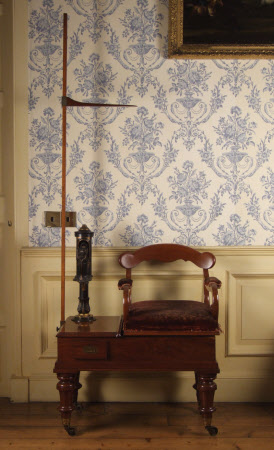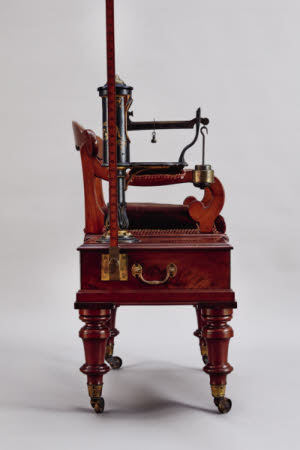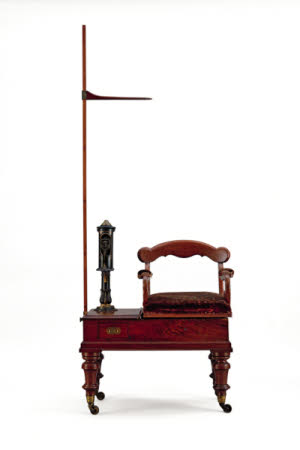Weighing scales
Category
Scientific instruments
Date
c. 1860 - c. 1890
Materials
Mahogany, textile and metal
Measurements
925 x 820 x 470 mm; 1730 mm (Height)
Order this imageCollection
Petworth House and Park, West Sussex
NT 485362
Caption
Weighing scales are a common feature in modern homes, used for measuring everything from ingredients to bodyweight. This velvet-padded Victorian seat, which stands in the Oak Staircase at Petworth House, is also a weighing scale. Similar examples could be found in the hallways of country houses or gentlemen’s clubs and this one has been recorded at Petworth since at least 1869. It uses a series of brass weights, which can be kept in a drawer under the seat, and also features a measuring pole and carrying handles. These chairs were typically used for weighing jockeys before a race to prevent any rider being lighter than the rest and gaining an unfair advantage. Petworth was certainly home to keen racehorse owners and breeders, including George Wyndham, 3rd Earl of Egremont (1751–1837). Scales are often associated with managing weight, whether aimed at loss or gain. In a club or country house guests might be weighed at the beginning and end of their visit; a slight weight increase being the sign of good food, a generous host and an appreciative guest.
Summary
Victorian mahogany weighing-scales consisting of an open armchair on a platform over four turned legs, with a drawer for the weights, and with carrying handles, scale and a measuring pole.
Provenance
By descent, until the death in 1952 of the 3rd Lord Leconfield, who had given Petworth to the National Trust in 1947, and whose nephew and heir, John Wyndham, 6th Lord Leconfield and 1st Lord Egremont (1920-72) arranged for the acceptance of the major portion of the collections at Petworth in lieu of death duties (the first ever such arrangement) in 1956 by H.M.Treasury.




